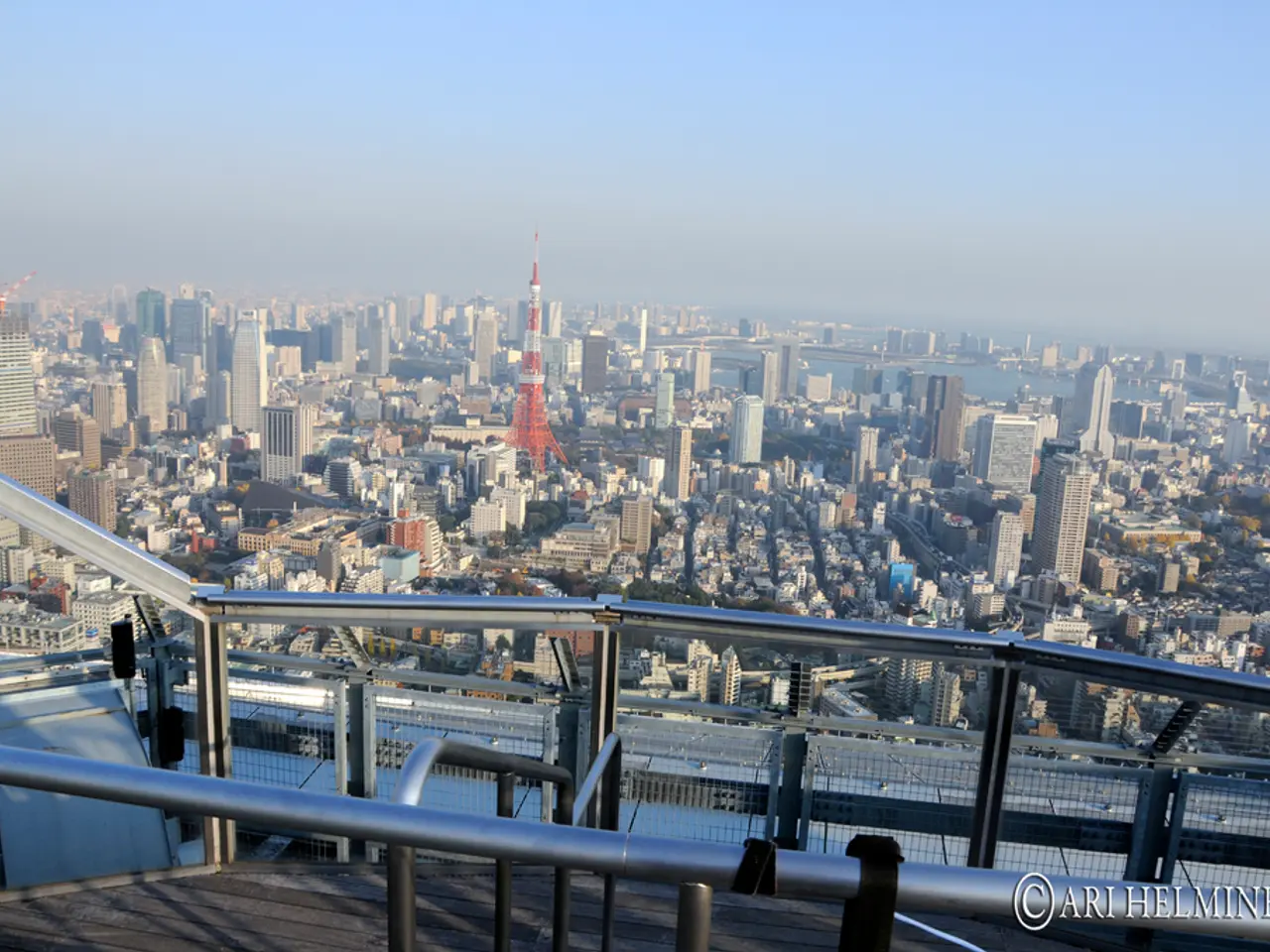Redefining Urban Landscapes: San Antonio's Alternative River Walk - San Pedro Creek Culture Park
The San Pedro Creek Culture Park, a 2.2-mile river walk completed in May 2021, showcases the evolution of urban flood control methods in the 21st century. Originally an industrial waterway and a toxic waste dump, the park has been transformed into a vibrant community amenity that integrates nature, art, and history while addressing flood control.
The park's southernmost section traverses more industrial sections of the city before opening up to feature its greatest stretch of nature. This area, now filled with blooming wildflowers in the summer and attracting clouds of butterflies, was once a flood relief channel, a stark contrast to the modern park spaces, green spaces, and wildlife that now call it home.
One of the park's most distinctive features is Mark Reigelman's giant, Corten steel, cupped hand, Falling Water. This sculpture captures stormwater runoff from the interstate above, filtering out trash and sending the cascading water into a natural area for filtration and dispersal before joining San Pedro Creek.
The park's northern limit is set by a perforated stainless steel wall screening mechanical operations from visitors. At night, the perforations are backlit to reveal what the stars looked like on May 5, 1718, the day San Antonio was founded by Spanish colonizers.
Adrian M. Garcia's ceramic tile mural De Todos Caminos Somos Todos Uno (From All Roads, We Are All One) stretches 117-feet along the creek channel, sharing snippets of San Antonio history from indigenous habitation on either end to present day. Joe Lopez's Bellos Recuerdos del Teatro Alameda y Tiempos Pasados recalls the segregated mid-20th century period in the city's history with another tile mural along the creek bed.
Kathy and Lionel Sosa's La Gloriosa Historia de San Pedro Creek On My Mind-another tile mural-shares five eras of San Antonio history across five separate murals: Foundation, Confrontation, Separation, Inundation, Restoration.
The San Antonio River, like San Pedro Creek, has a history of man-made efforts to control its flow, dating back over 100 years. Often described as a flood control ditch, the river has been the subject of large-scale structural interventions like dams and straightened or channelized rivers. However, the best practices for urban river flood control in the 21st century emphasize integrating nature-based solutions with advanced engineered systems.
These modern practices incorporate restoring floodplains, wetlands, and riparian buffers to slow, store, and filter floodwaters naturally, enhancing biodiversity and resilience over time. Techniques include rain gardens, green roofs, permeable pavements, bioswales, and urban forests to manage stormwater where it falls and mimic natural hydrological cycles.
Modern infrastructure also employs sensors, real-time control systems, and adaptive flood barriers that can respond dynamically to changing conditions, guided by advanced forecasting and artificial intelligence to optimize flood risk management.
The San Pedro Creek Culture Park is a prime example of this integrated approach, combining gray infrastructure like levees and pumps with green infrastructure to create a multifunctional space that integrates urban parkland, restored creek morphology, habitat enhancement, and public access while addressing flood control.
This shift toward holistic urban water management combining flood control, ecology, and social functionality is a testament to the 21st century’s best practices, which move beyond merely containing floods to embracing landscape-level resilience, community engagement, and ecosystem health. This contrasts with mid-century approaches focused mainly on large-scale structural flood defenses and river channel modifications without significant ecological or social considerations.
In 1991, a tunnel 24-feet in diameter was constructed at a depth of 140-feet below the San Pedro Creek, running a length of 1.1 miles to divert flood water out of the creek bed downtown and supply water to the creek bed in times of drought. An even larger stormwater tunnel was constructed in the mid-90s under the San Antonio River through downtown.
The San Pedro Creek Culture Park, in its revitalization, represents a significant evolution in urban flood control, demonstrating the potential for urban waterways to transform from industrial eyesores into vibrant, ecologically sound community spaces.
- The San Pedro Creek Culture Park, with its integration of green spaces, wildlife habitats, and historical art, offers opportunities to explore not only its transformed natural environment but also its fashion and beauty, as seen through the various tile murals that depict San Antonio's history.
- As travelers stroll through the park, they can indulge in a variety of food and drink options, which include a mix of traditional San Antonio cuisine and contemporary offerings, all while appreciating the park's commitment to home and garden restoration.
- With the San Pedro Creek Culture Park's combination of gray infrastructure for flood control and green infrastructure for parkland, habitat, and public access, it serves as a model for a contemporary lifestyle that harmonizes urban development with nature, promoting a new vision for urban water management.




